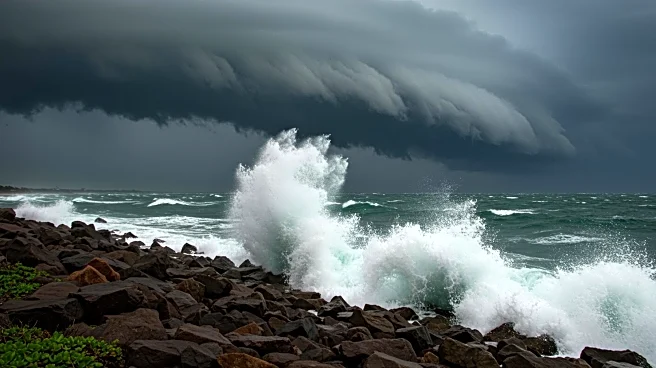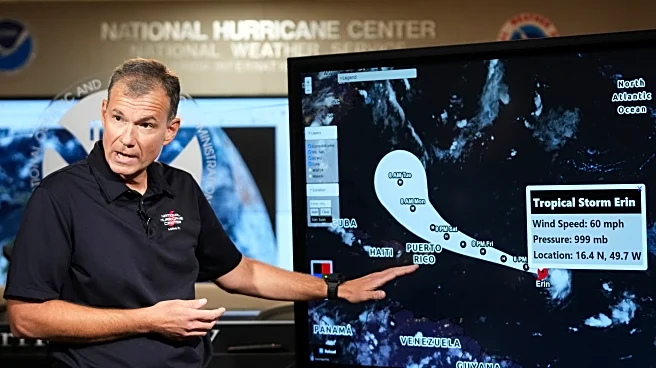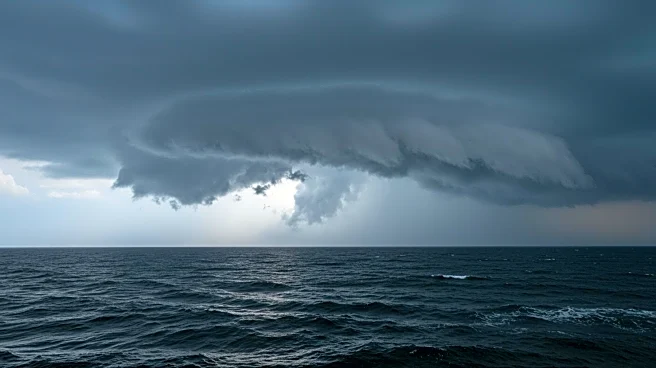What's Happening?
Hurricane Erin has become the first Atlantic hurricane of the year, intensifying with winds reaching 75 mph as it moves towards the Caribbean islands. The National Hurricane Center has forecasted that Erin could reach Category 4 strength by Monday, with maximum sustained winds of 138 mph. Currently, Erin is located about 460 miles east of the Leeward Islands and is expected to bring heavy rain, strong winds, and hazardous sea conditions to parts of Puerto Rico and the Virgin Islands over the weekend. A tropical storm watch is in effect for several islands, including Anguilla, Barbuda, and St. Martin. The storm is projected to track north of the Caribbean Islands, potentially affecting the Turks and Caicos and the Bahamas early next week. Although Erin is expected to remain offshore, it could still cause dangerous surf and rip currents along the U.S. Eastern Seaboard.
Why It's Important?
The intensification of Hurricane Erin poses significant risks to the Caribbean region and the U.S. East Coast. The potential for flooding, strong winds, and dangerous sea conditions could impact local communities, disrupt travel, and affect economic activities in these areas. For the U.S., while direct landfall is unlikely, the threat of rip currents and rough seas could pose hazards to coastal communities from Florida to Maine. The storm's development underscores the importance of preparedness and monitoring for regions prone to hurricanes, as these natural events can have widespread and severe consequences on infrastructure, safety, and local economies.
What's Next?
As Hurricane Erin continues to strengthen, residents and authorities in the Caribbean and along the U.S. East Coast are advised to stay informed and prepared for potential impacts. The National Hurricane Center will continue to monitor the storm's path and intensity, providing updates and warnings as necessary. Additionally, another weather disturbance is being monitored near South Texas, which could bring heavy rainfall and flash flooding to the region. This highlights the ongoing need for vigilance and readiness in areas susceptible to severe weather events.












